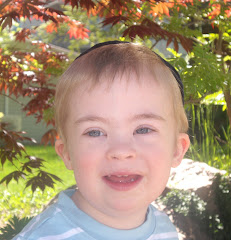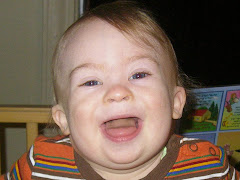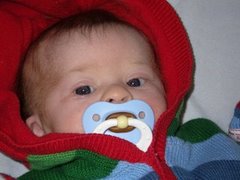The following article was published in the September issue of the Building Blocks magazine, a supplement to the Jewish Press.
 Interview With MEDEK Founder Ramon Cuevas
Interview With MEDEK Founder Ramon Cuevas
By Perel Grossman
A few moments with the originator of the CME/MEDEK program is enough to make one realize that this dynamic individual is no ordinary therapist. Ramon J. Cuevas is obviously fired with determination, dedication to a cause, and gratefulness for G-d’s role it all.
The story begins in 1969, when Ramon Cuevas graduated from the University of Chile with a degree in Physical Therapy. Like others in his field, Cuevas started his career by providing traditional physical therapy to his patients. However, after a while, Ramon became increasingly frustrated with his efforts, after noting only minimal progress in his patients. Somehow, he knew, there was more that could be accomplished.
In 1971, he began his research, and with the permission of parents eager to see their children advance their motor skills, Ramon initiated experimentation with new techniques of his own device. Working with babies 3 - 4 months of age, his research entailed placing them in various positions, using manual exercise to incite progress (all the while carefully monitored the infants to ensure that the movements were not causing them any harm). By this method, Mr. Cuevas discovered that placing his small patients in certain positions caused the brain to react, thus triggering the automatic motor responses pre-programmed in the child’s brain. (In a healthy child, the aging process automatically causes these responses to kick in.)
This research led to the development of Cuevas’s original method of physical therapy known as “MEDEK” or CME (Cuevas Medek Exercise). CME is a therapeutic approach based on manual exercise, developed to treat children with motor development issues. MEDEK can be applied to youngsters and babies with Cerebral Palsy, Downs Syndrome, Spina Bifida, various orthopedic conditions, and low muscle tone. (MEDEK is not appropriate for any progressive degenerative neuromuscular disease.)
HOW DOES MEDEK/CME WORK?
As Mr. Cuevas points out, MEDEK or CME works very differently from traditional therapy. “Where traditional therapy facilitates patients to do things, CME provokes progress- literally forces the brain to react.”
The idea is to expose the child’s body to extreme situations, thus producing a reaction. This experience creates new connections in the brain, also known as synapses. Ironically, the “plasticity” of the brain - its amazing ability to create new pathways and thus new capabilities – has become a very hot topic in the world of science today.
Yet, Mr. Cuevas stumbled upon this discovery 35 years ago, purely by instinct. Only recently has the scientific world borne witness to this incredible phenomenon through various laboratory experiments and the like. Ramon explains that “any child that enjoyed progress through my therapy already had the recovery potential.” It is just a matter of provoking, using and enriching the brain’s capabilities.
GOOD NEWS TRAVELS FAST
Mr. Cuevas’ reputation began to spread via word of mouth, and the start of international acclaim came as a result of treating the children of two families in Toronto, Canada. The extremely satisfied parents recommended CME to other families desperately searching for help for their developmentally delayed youngsters.
Although Mr. Cuevas began his work with infants and children up to the age of three, who could be manipulated most easily due to their small stature and low weights, parents who heard of his work soon arrived at his door, begging him to intervene with their older children. This required a tremendous amount of strength in his arms, and particularly thumbs, as oftentimes the child’s entire body weight has to be supported solely by the therapist at ankle level.
Still here, CME seemed to help and even produce astounding results in the children who were brought to him from all over the world.
One child arrived at his doorstep, capable only of walking completely bent forward, while grasping a parent’s hand on both sides. After just three days of intense therapy, the child was walking freely. Ramon even took on a twenty-year-old patient, which was an extreme challenge (CME is only designed for children). The young man was getting around with great difficulty, with the aid of two canes. Within a year, this boy’s life was transformed, as he gained the ability to walk freely.
Ramon Cuevas developed the CME approach (formerly MEDEK) in the early 1970’s. He has more than thirty five years of experience in the treatment of children with neurological and musculoskeletal dysfunction. Cuevas teaches students and professionals around the world and has participated in conferences in South America and USA. He can be reached at (56-2) 4265334, (56-2) 4329050 or by e-mail: cme@cuevasmedek.com. Visit his website at http://www.cuevasmedek.com/



 We three were born within 2 days of each other.
We three were born within 2 days of each other. We heard a story, took turnes saying the 12 Pesukim (Torah Passages)
We heard a story, took turnes saying the 12 Pesukim (Torah Passages) and played a game with my Tatty.
and played a game with my Tatty. More Tzedakkah fun.
More Tzedakkah fun. Der Gantzer Mishpacha.
Der Gantzer Mishpacha. ( Being that this picture ended up here....this is Mendele and his new therapist who does Feldenkrais with him.)
( Being that this picture ended up here....this is Mendele and his new therapist who does Feldenkrais with him.)


 Happy Birthday!
Happy Birthday!


















